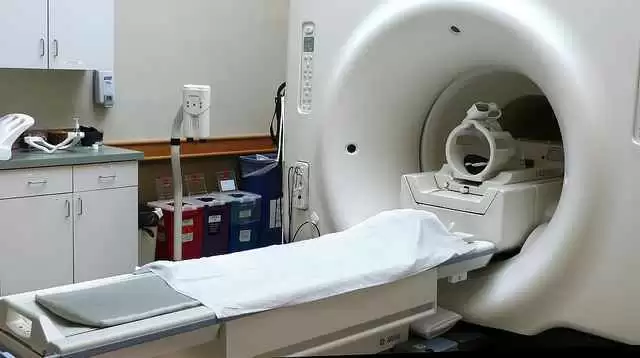
Celiac.com 01/17/2017 - A diagnosis of pellagra will likely have many other disease presentations, not limited to acne, rosacea (dermatitis) skin rashes, depression, anxiety, dementia, etc., as well. Seventy-five or more years ago the symptoms of Pellagra were commonly diagnosed as separate diseases that were known to be of a common cause. Similarly celiac disease today is often referred to as the "tip of the iceberg," not only because of the large number of undiagnosed people, but also due to the vast range of symptoms and associated diseases and disorders that can be caused by untreated celiac disease. I assert that pellagra could be, in some cases, related to celiac disease, and might even cause it.
Today Pellagra has mainly been reserved for subgroups of people like alcoholics or disadvantaged groups like the homeless, who lack good protein sources in their diet to stave it off. Quoting Niki Frost from the Pellagra Disease Blog: "Since pellagra is such a rare disease today, few people recognize it based on their symptoms alone (any of the three D's: dementia, dermatitis, and diarrhea). Pellagra patients are consequently referred to specialists in fields that are ultimately unrelated to the underlying nutritional deficiency and metabolic nature of the disease." (1)
Celiac.com Sponsor (A12):
Dr. Heaney, Professor of Medicine at Creighton University, actually echo this fact when he says "In the United States, at least, Pellagra is a disease of the past, fortunately, and it is doubtful today that most health professionals would recognize it if a case happened to come to their attention." (2) Why is this? Because, as mentioned above, doctor's don't recognized it today unless they are a specialist, and even then, according to Nicki Frost: "specialists (are) in fields that are ultimately unrelated to the underlying nutritional deficiency and metabolic nature of the disease." (3) So the cycle repeats.
Since these specialists might not consider people with celiac disease/Non-Celiac Gluten Sensitivity (NCGS) to be in a subgroup which is prone Pellagra, is it possible that some people are misdiagnosed? Skin conditions like acne, dermatitis, eczema, psoriasis, skin lesions, and mouth ulcers can be related to both Pellagra and celiac disease or NCGS. Some of the other signs of Pellagra, other than digestive distress, are dementia related symptoms such as depression, anxiety, brain fog, mental confusion, etc., which are also present in 40 percent of celiac patients. What if doctors haven't made the right diagnosis in some cases? Many people who might be misdiagnosed with celiac disease but who actually have Pellagra might not get better because they are not treating the right disease.
Pellagra and its associated skin and GI problems are totally reversible with supplementation, which is one of the reasons that many foods are enriched with niacin. Glutenfree Works covers this topic well by noting a casual relationship, but not a causal relationship. They even note that a niacin deficiency itself can cause some of these symptoms. According to Glutenfree Works:
"Intriguing animal research by Sandhur et. al. has shown that niacin deficiency itself sensitizes the intestinal mucosa of rats to gluten in wheat, barley, rye, oats and corn and induces susceptibility to gluten toxicity by means of cellular dysfunction. Human research needs to investigate this effect of niacin deficiency in human celiac disease." (4)
But no one else seems to take note of this amazing fact. The research by Sandhur et. al. is 30+ years old, but is it possible that people are suffering from all kinds of GI problems, possibly even celiac disease, because they are ignorant of this fact?
Around 15 years ago Prousky did follow up human research (5) that supports the idea that niacinamide can indeed treat different digestive problems. It was this initial research which I read 10+ years ago that lead me to the hypothesis that Pellagra today is might be misdiagnosed as celiac disease, because doctors are no longer able to recognize Pellagra in a clinical setting, having not seen it 75+ years.
From Dr. Heaney's blog: "2014 marks the 100th anniversary of the war on pellagra, a war that lasted nearly 25 of those years before victory could finally be declared. You have not heard of the war on pellagra? The celebration is not on your calendar? You're not alone. Why did it take so long? Was the science so intractable, like the current "war" on cancer? No. It was politics and pigheadedness that were the obstacles." Dr. Heaney says: "Nutritional deficiency was not an accepted category of disease when Goldberger started work" on his cause/cure for Pellagra, and I must also mention that it is not looked at today in those diagnosed with celiac disease. (6)
Let's look into this more if we can. Let's see what other expert's say about this. If we look at back issues of The International Journal of Celiac Disease we see a casual link that indicates a co-morbidity of Pellagra in celiac patients of 58%. (7) Note they the International Journal of Celiac Disease is not looking for a causal link but they only report casual association. In the article entitled "Two Exceptional Complications Revealing Celiac Pellagra" the author notes: "pellagra is essentially affecting tissues with a high rate of cell turnover, such as the digestive tract and the skin, and tissues with high energy needs, such as the brain". (8) If the symptoms are so similar, it might be easy to confuse one disease for the other.
How is this possible? The International Journal of Celiac Disease muses on this point too. When discussing the "exceptional" and not well understood reasons why Pellagra might show up in a celiac diagnosis, they say "Little progress has been made in our knowledge of pellagra...since Goldberger discovered that nicotinamide was a preventive factor in 1926...(P)roof of this is that there have been no changes in treatment or diagnostic criteria in the last 90 years." The International Journal of Celiac Disease summarizes this case of "Exceptional complications revealing celiac disease and Pellagra illustrates...rare complication revealing celiac disease". (8)
Since up to 58 percent of celiac patients might be co-morbid with Pellagra, could it be possible that Pellagra is the "parent disease," and the those diagnosed with celiac disease have symptoms derived from Pellagra? If we follow most normal paths for adoption it will take another 20 years (a generation) for the medical community to accept Pellagra as perhaps the proper diagnosis in some cases. So there is some evidence to suggest that medical science is, perhaps in many cases, identifying the wrong disease. If one is critically low in niacin, the 3 D's of Pellagra (Dementias, Dermatitis's, and Digestive Issues) show up.
Take the "Niacin (Niacinamide) Challenge" and see if taking it three times a day for six months don't cause a healthy GI pattern, including a once per day bowel movement that sinks and healthy burping without bloating. Taking the niacinamide Challenge may put co-morbid cases of Pellagra, including its digestive symptoms, into remission, and provide relief for many who do not recover on a gluten-free diet alone. The number one mistake people make when taking niacinamide is they don't take it for long enough. It takes 4 to 6 months to overcome a serious deficiency of this vitamin, and for your mucus membranes (GI lining) to heal itself.
Once you recover you can maintain your health, barring some future stress/trauma that depletes your reserves, at which time heartburn/GERD/IBS/diarrhea/constipation symptoms will return, and you will lose your ability to burp easily again. And the cycle repeats and the Pellagra symptoms come back with a vengeance.
References:
- https://pellagradisease.wordpress.com/
- https://pellagradisease.wordpress.com/
- http://glutenfreeworks.com/blog/2010/06/23/niacin-vitamin-b3-deficiency-in-celiac-disease/
- Prousky, Jonathan E. Is Vitamin B3 Dependency a Causal Factor in the Development of Hypochlorhydria and Achlorhydria? Journal of Orthomolecular Medicine, Vol. 16, No. 4, 4th quarter 2001, pp. 225-37. http://www.orthomolecular.org/library/jom/2001/articles/2001-v16n04-p225.shtml
- International Journal of Celiac Disease. Celiac Disease: Intestinal, Heart and Skin Interconnections. 2015, 3(1), 28-30 doi:10.12691/ijcd-3-1-6 (http://pubs.sciepub.com/ijcd/3/1/6/)
- International Journal of Celiac Disease. Two Exceptional Complications Revealing Celiac Disease: Ischemic Cardiomyopathy and Pellagra. International Journal of Celiac Disease. 2015, 3(1), 31-32 doi:10.12691/ijcd-3-1-5. (http://pubs.sciepub.com/ijcd/3/1/5/)








Recommended Comments
Create an account or sign in to comment
You need to be a member in order to leave a comment
Create an account
Sign up for a new account in our community. It's easy!
Register a new accountSign in
Already have an account? Sign in here.
Sign In Now